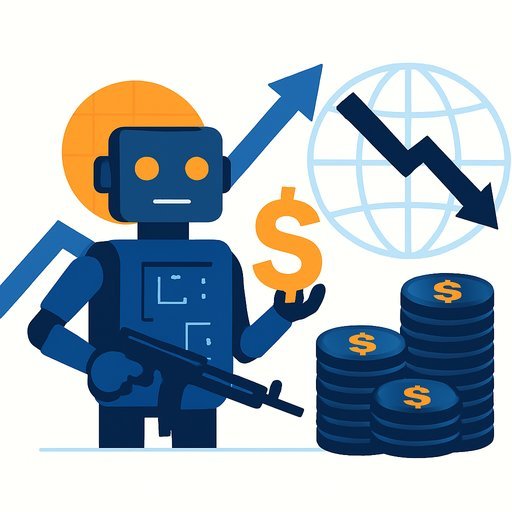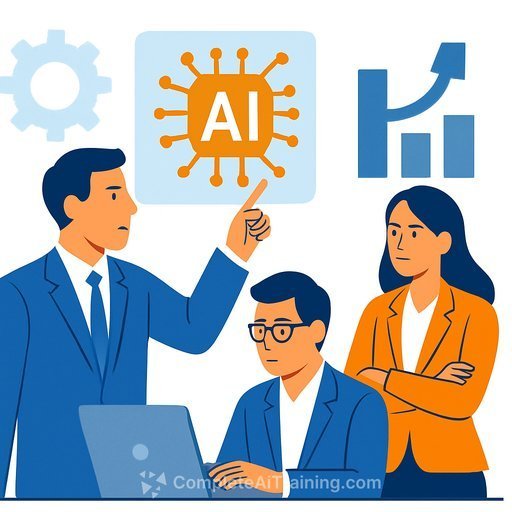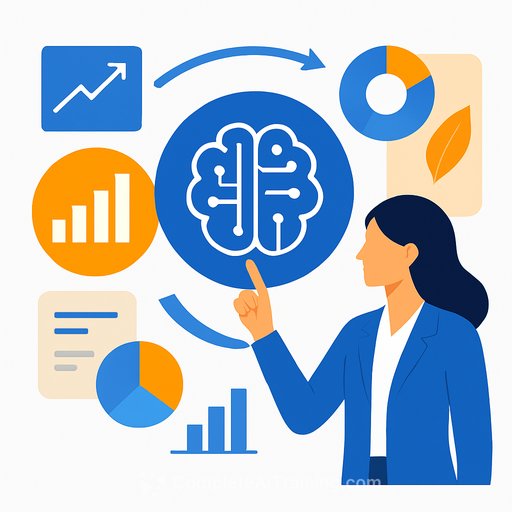AppsFlyer's 30-Day AI Reset: How to Build Competence, Confidence, and Real Product Impact
Most companies try to bolt AI onto existing work. AppsFlyer did the opposite. The company paused regular goals for a full month and made AI learning the job for all 1,300 employees.
The result: distributed competence, faster experimentation, and a culture that ships AI into the product, not just slide decks. If you lead strategy, this is a repeatable model.
The Problem: The AI Hesitancy Gap
Top-down AI mandates sound good in the boardroom and stall in the trenches. Leaders push KPIs and tools. Teams feel unsure, behind, and hesitant to try anything meaningful.
That gap-what AppsFlyer calls the "AI hesitancy gap"-creates imposter syndrome and surface-level adoption. You don't fix it with more dashboards. You fix it by giving people time, safety, and purpose-built structures to learn.
The Move: Pause, Learn, Build
AppsFlyer pressed pause on standard objectives for one month. Learning and experimenting with AI became the work. No competing priorities. No busywork.
They paired this with clear executive intent and bottom-up execution: AI-driven objectives (ATOMs), internal hackathons, visible AI champions, and dedicated time to ship experiments. CEO Oren Kaniel backed the reset. Chief Product Officer Barak Witkowsky made sure knowledge spread across teams, not just a central group.
Product Shift: From Attribution to a Modern Marketing Cloud
Internal transformation showed up in the product. What began as an attribution platform now includes AI agents that help marketers with audience analysis, campaign strategy, and creative recommendations.
These agents act like team extensions. They suggest tests, handle repetitive analysis, and support omnichannel execution. Clients get faster insights and cleaner operations, and they can move toward autonomous workflows without flipping a switch overnight.
Trust: Measure Confidence by Behavior, Not Surveys
AppsFlyer tracks trust through actions. Are clients re-allocating spend within days based on AI insights? Are they letting agents make routine adjustments without manual review?
Those are the signals that matter. Surveys and logins can be deceiving. Behavior is the truth. Gradual autonomy builds that confidence step by step.
What Executives Can Lift From This
- Declare a time-bound AI reset: 30 days where learning is the job.
- Set a few high-clarity objectives (ATOMs) that tie to revenue, cost, or speed.
- Stand up internal champions across functions; make their work visible.
- Run weekly hackathons and demos; ship small wins every week.
- Codify what works into playbooks and templates; retire what doesn't.
- Measure confidence with behavioral metrics (budget moves, cycle time, automation rate).
- Evolve the product in parallel; build agents that reflect your core value prop.
Metrics That Actually Move the Needle
- Behavioral trust: percent of spend or decisions driven by AI within 72 hours.
- Cycle time: time from question to insight to action (target: days to hours).
- Automation rate: tasks per function handled by agents without human review.
- Adoption depth: number of teams contributing AI playbooks used by other teams.
- Product impact: share of product usage that involves AI features, tied to retention and revenue.
Org Design Principles That Worked
- Executive clarity, grassroots execution: leaders set direction; teams discover use cases.
- Distributed competence: avoid a single "AI team" bottleneck.
- Dedicated time: remove competing work so people can actually learn.
- Public learning: demos, recognition, and simple templates encourage replication.
Implications for Marketing Teams
As AI takes on more operational work, marketers move up the stack. Strategy, creative direction, and user understanding become the main job. The emerging model: marketers manage agents, and agents manage other agents executing routine workflows.
This doesn't replace marketers; it expands their reach. Those who adopt this model increase throughput and decision quality. Those who resist fall behind.
Practical Next Steps (90-Day Plan)
- Weeks 1-4: Run an AI learning sprint. Curate a simple curriculum, assign champions, and hold weekly demos.
- Weeks 5-8: Launch 3-5 ATOMs tied to real outcomes. Instrument behavioral metrics from day one.
- Weeks 9-12: Productize what worked. Ship two agent-led workflows into production and expand to a second team.
For governance and risk, anchor policy to established frameworks and make it lightweight enough to move fast. The goal is safe progress, not red tape. Useful references: NIST AI RMF and market adoption data like McKinsey's annual report (State of AI).
Support Your Rollout
If you're formalizing a 30-day sprint or building role-based paths, you can pull structured curricula by function here: Complete AI Training - Courses by Job.
FAQs
What does it mean to have an AI-first culture?
It means prioritizing AI knowledge and adoption across all employees, not a small central team. At AppsFlyer, every employee learned and used AI tools as part of daily work.
How did AppsFlyer train 1,300 employees in AI?
They paused standard business objectives for a month and ran a structured AI builder program. Hackathons, internal champions, and protected time made experimentation possible.
Why pause regular goals for AI training?
To remove competing priorities. When learning is the job, people engage deeply and share what works across teams.
How has the product changed?
The platform evolved from attribution into a modern marketing cloud with AI agents that support analysis, campaign management, and strategic recommendations.
What's the long-term benefit of an AI-first workforce?
Faster innovation, better internal processes, and clients who adopt AI with confidence. Skills compound across the org, and product velocity increases.
Your membership also unlocks:






